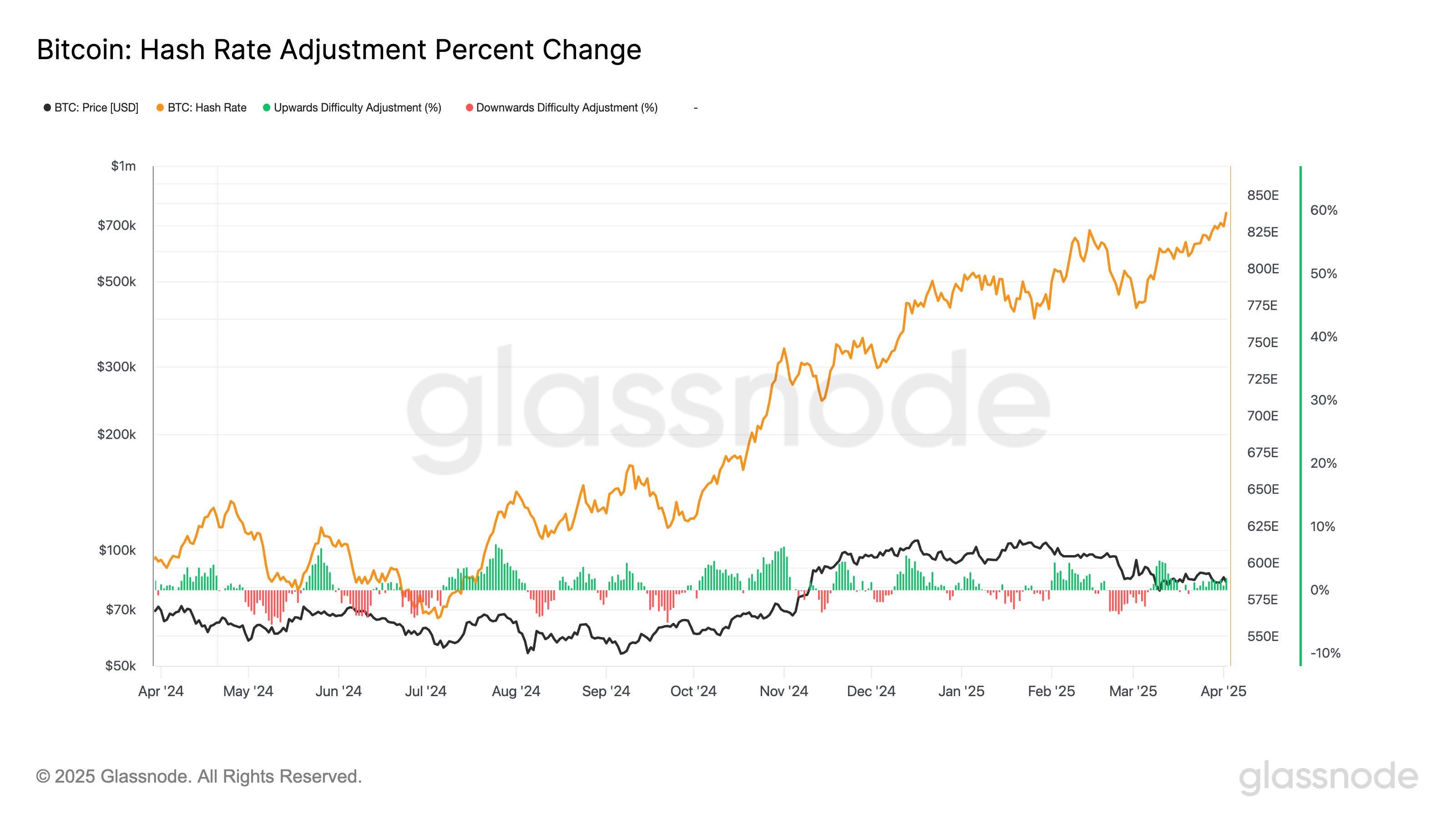
Bitcoin's Hash Rate Reaches Unprecedented High While Price Activity Shows Different Trends
While Bitcoin's hash rate breaks records, low transaction fees and a lack of active blocks raise questions about its long-term viability.
Bitcoin’s hashrate is experiencing a remarkable surge, indicating a significant disconnect between network activity and the current price of Bitcoin (BTC). According to data from Glassnode, the hashrate recently reached an all-time high of 838 exahashes per second (EH/s) on a 14-day moving average. In a 24-hour period, it spiked to 974 EH/s, marking the second highest level ever.
Key Insights:
- The hashrate has reached an unprecedented level, diverging sharply from Bitcoin’s price.
- Transaction fees remain low, averaging around ~4 BTC/day, raising concerns about mining profitability.
- A notable number of empty or nearly empty blocks highlight a decline in network activity beyond mere price speculation.
The current divergence between hashrate and price is concerning. While Bitcoin’s price is approximately 25% below its all-time high, the costs of mining are rising. For miners to remain profitable and cover their expenses, a substantial Bitcoin price, full blocks, and higher transaction fees are vital.
Warning Signs:
Recently, developer Mononaut from Mempool noted that Foundry USA Pool mined the emptiest “non-empty” block in over two years, which contained merely seven transactions—only surpassed by a block with four transactions back in January 2023.
These findings underscore the paradox. Despite a rising hashrate suggesting a thriving network, near-empty blocks imply a lack of active participation. Nicolas Gregory, creator of the Mercury Layer, remarked on X:
“Half-empty bitcoin blocks tell a tale — hawking the store-of-value line could scupper its future. I hope bitcoiners realize this space is more than just podcasts, spaces, and the ‘number go up’ digital gold narrative. If we don’t get people using bitcoin for real commerce, it’s game over.”
In summary, the rising hashrate juxtaposed with low transaction fees and diminished block activity poses a risk to Bitcoin’s sustainability.


